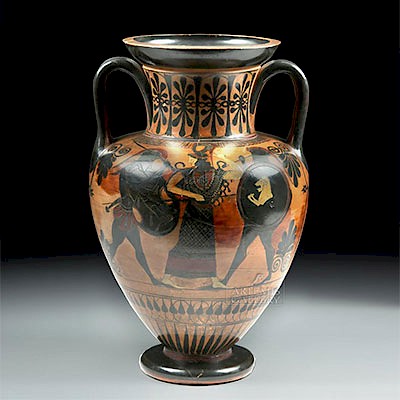Palmyran Limestone Head Of A Priest (In Relief)
Lot 45a
About Seller
Artemis Fine Arts
686 S Taylor Ave, Ste 106
Louisville, CO 80027
United States
Selling antiquities, ancient and ethnographic art online since 1993, Artemis Gallery specializes in Classical Antiquities (Egyptian, Greek, Roman, Near Eastern), Asian, Pre-Columbian, African / Tribal / Oceanographic art. Our extensive inventory includes pottery, stone, metal, wood, glass and textil...Read more
Estimate:
$8,000 - $12,000
Absentee vs Live bid
Two ways to bid:
- Leave a max absentee bid and the platform will bid on your behalf up to your maximum bid during the live auction.
- Bid live during the auction and your bids will be submitted real-time to the auctioneer.
Bid Increments
| Price | Bid Increment |
|---|---|
| $0 | $25 |
| $300 | $50 |
| $1,000 | $100 |
| $2,000 | $250 |
| $5,000 | $500 |
| $10,000 | $1,000 |
| $20,000 | $2,500 |
| $50,000 | $5,000 |
| $100,000 | $10,000 |
| $200,000 | $20,000 |
About Auction
By Artemis Fine Arts
Oct 11, 2018
Set Reminder
2018-10-11 10:00:00
2018-10-11 10:00:00
America/New_York
Bidsquare
Bidsquare : Exceptional Antiquities | Ethnographic Art
https://www.bidsquare.com/auctions/artemis-gallery/exceptional-antiquities-ethnographic-art-3500
An important one-day auction featuring museum-worthy examples of classical antiquities, ancient and ethnographic art from cultures encompassing the globe. Artemis Fine Arts info@artemisgallery.com
An important one-day auction featuring museum-worthy examples of classical antiquities, ancient and ethnographic art from cultures encompassing the globe. Artemis Fine Arts info@artemisgallery.com
- Lot Description
Near East / Holy Land, Palmyra, Roman period, ca. 2nd to 3rd century CE. Skillfully carved in high relief and finely detailed, a limestone head of a young priest wearing a characteristically tubular headdress. The priest's quixotic visage is comprised of heavy-lidded, almond-shaped eyes with incised irises and pupils, neatly manicured brows, an aquiline nose, closed full lips with delineated philtrum and Cupid's bow, full youthful cheeks, a rounded chin, and naturalistic ears. Though with losses as shown, the details are beautifully preserved. Size: 10.5" H (26.7 cm); 15.25" H (38.7 cm) on included custom stand.
Palmyra was a wealthy city that linked the caravan routes from the Parthian Near East with the Roman Mediterranean; the people who lived there during this period largely enjoyed prosperity and were able to adopt eastern and western customs, clothing, and artistic styles, creating a distinctive visual culture unique to the city. We know of this culture today from the large funerary monuments that the Palmyrans built - tower-shaped vaults whose interiors were lined with sculpted limestone reliefs depicting the deceased.
c.f. a similar sculpture in "Zenobia: il sogno di una regina d'oriente" (Milan, 2002), no. 44, pg. 50 and 52; and two heads catalogued as nos. 35 and 37 on pgs. 40-41 of J. Michael Padgett, ed., "Roman Sculpture" (Princeton, 2001).
Provenance: private East Coast, USA collection; ex-William Froelich collection, New York, USA, acquired in the 1970s
All items legal to buy/sell under U.S. Statute covering cultural patrimony Code 2600, CHAPTER 14, and are guaranteed to be as described or your money back.
A Certificate of Authenticity will accompany all winning bids.
We ship worldwide and handle all shipping in-house for your convenience.
#139011Losses to headdress, neck, ears, nose, and other high pointed areas. Expected surface wear and abrasions commensurate with age.Condition
- Shipping Info
-
All shipping is handled in-house for your convenience. Your invoice from Artemis Gallery will include shipping calculation instructions. If in doubt, please inquire BEFORE bidding for estimated shipping costs for individual items.
-
- Buyer's Premium



 EUR
EUR CAD
CAD AUD
AUD GBP
GBP MXN
MXN HKD
HKD CNY
CNY MYR
MYR SEK
SEK SGD
SGD CHF
CHF THB
THB














